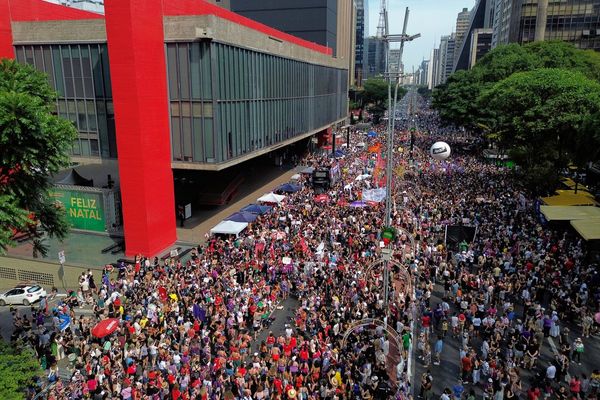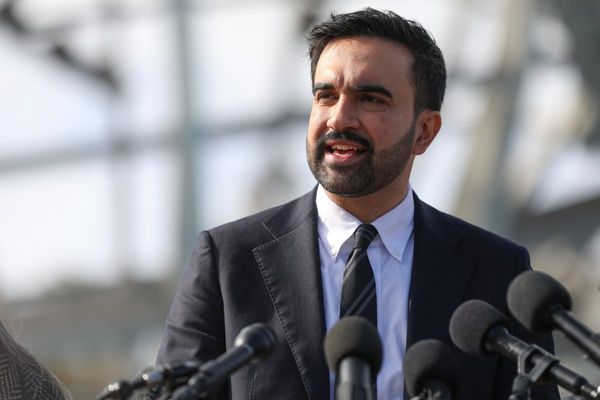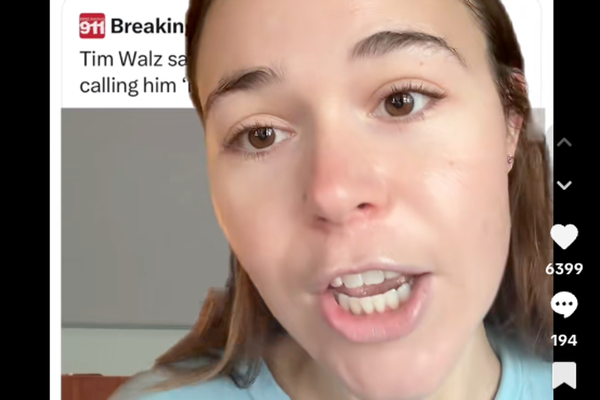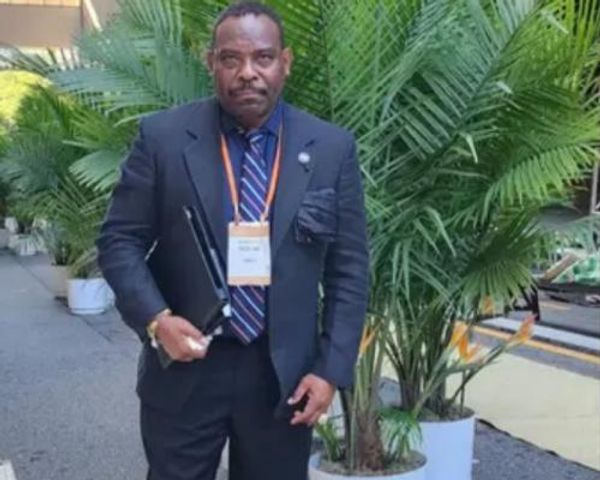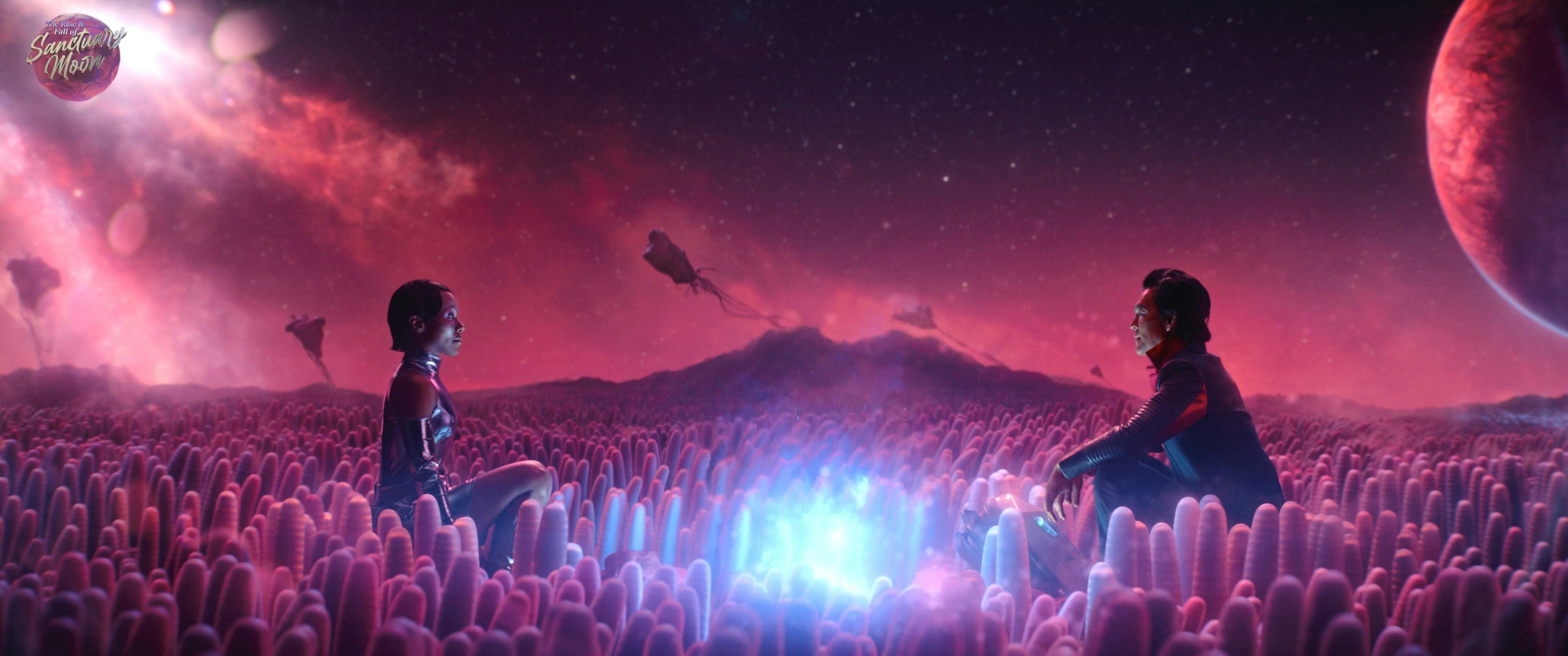
In Murderbot Episode 6, SecUnit (Alexander Skarsgård) has a near-fatal experience. Or, whatever you want to call a near-fatal experience for a SecUnit might feel like. But, within this episode, “Command Feed,” our hilarious hero takes solace, once again, in his favorite outer space soap opera, Sanctuary Moon. But why does this show-within-a-show look so good? What is the design secret that makes the future of Murderbot click, especially in regard to its hilarious Star Trek send-up?
“We were going for this almost metallic, ultra-saturated color palette,” Murderbot designer Sue Chan tells Inverse. “All the colors are like, look at me, look at me, look at me.”
Doing any kind of metafictional sci-fi show with a Star Trek vibe is tricky. And yet, in a crowded year in which there are oddly a few other meta-Star Trek-ish shows (Black Mirror Season 7, an upcoming episode of Strange New Worlds), the fact that Sanctuary Moon stands out is notable. But Chan says that the design for Sanctuary Moon mirrors her approach to all good design in a film or TV series: it all comes down to how to create convincing world-building through character.

“Psychologically, this is what's informing Murderbot,” Chan explains. “It is sort of weaned, nourished on these ideas of what people are like. Before it worked with the PreservationAux survey team, it had only worked with knuckleheads. So, when its assumptions about humans are questioned by this group of people, it’s fun for us to see the contrast between Murderbot’s real life and Sanctuary Moon.”
In Episode 6, corny future-tense art mirrors life, as Murderbot recalls an episode of Sanctuary Moon in which Nav Bot 337 Alt 66 (DeWanda Wise) shares a tender moment with Captain Hossein (John Cho). As Chan points out, this scene echoes the real-life struggles SecUnit is facing, but the scene itself is striking in its over-the-top alienness. It’s also very, very pink.
“We thought, okay, well why wouldn't they be sitting in a field of pink cucumbers that are just alive?” Chan says with a laugh. “It was so silly. And, we hadn't seen it before. So we're like, let's do it. They're having this romantic scene, and there are all these witnesses to it, and why not? We had a lot of that on the show, asking ‘Hey, why not?’”
Because the first Martha Wells Murderbot novel didn’t reveal too many details of The Rise and Fall of Sanctuary Moon, the TV series is in a position to create quite a bit of specific imagery. As Chan points out, there is something recognizable about Sanctuary Moon, especially if you’ve been a sci-fi fan at any point in your life. But there’s also something that is turned up way past eleven, as though we’re watching a show, created by AI, in the far, far future.
“I wanted it taken to the nth degree,” Chan explains. “If most of the entertainment was created by AI anyway, and it was just churning and recycling, what would be the iteration of Star Trek meets Battlestar Galactica meets the cheesiest things ever? What would that produce between the makeup and the hair, and the sets? We decided it would be lots of colors that are very strong and in your face. Basically, we wanted to see how far we could go.”
Chan also thinks that the casting of John Cho, famous to Trek fans as Sulu, was a “genius” move from Murderbot showrunners Paul Weitz and Chris Weitz. “Maybe he would maybe the only person who survives from today into the future?” she says.
The tongue-in-cheek opening credits of The Rise and Fall of Sanctuary Moon do credit several fictional actors, including Cho’s Captain Hossein, who is, in theory, played by “Eknie Jef Che.” But is Eknie Jef Che really a flesh-and-blood actor in the Murderbot world? “Maybe John Cho has been digitally reinserted via AI,” Chan says. “Maybe there are no actors in the future. We don’t really know.”
